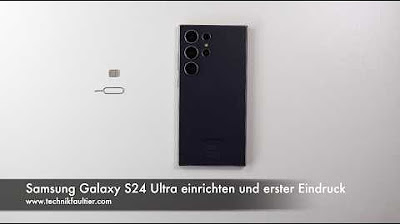Demo Open AI Agent o1& Real Time - GenerationAI Conference Paris
Summary
TLDRThis transcript highlights a user’s experience with an AI-driven customer service interaction regarding their malfunctioning Galaxy S23. The AI not only analyzes the situation using visual and textual input but also navigates through a complex return policy, providing an accurate resolution. The system generates dynamic UI components based on the user’s requests, such as comparing phone characteristics and finding alternative products. It demonstrates how reasoning, structured outputs, and adaptability can improve customer service efficiency and enhance the user experience in complex scenarios.
Takeaways
- 😀 The speaker discusses the process of returning a faulty Galaxy S23 after more than a year of use.
- 😀 The model fetches the order details and identifies the relevant product (Galaxy S23) in the user's order history.
- 😀 The AI interface is not just text-based but incorporates a dynamic and interactive UI that adapts based on the model's output.
- 😀 The model requests the user to describe the problem and allows for image uploads to assist in the diagnosis.
- 😀 Using the AI's vision capabilities, the model can analyze images to determine whether there's visible damage to the phone.
- 😀 The AI assesses the return policy and concludes that the user is eligible for a replacement with 110% of the original price paid.
- 😀 The model explains its reasoning for the conclusion, referencing the detailed decision tree of the return policy.
- 😀 A direct comparison is made between GPT-4 and another model (O1), highlighting the superior reasoning ability of O1 in understanding the complex return policy.
- 😀 The assistant facilitates the return process, making it easy for the user to proceed without needing to navigate external platforms or click through multiple options.
- 😀 The assistant offers alternatives when the user's current phone is out of stock, dynamically adjusting the UI to show options and comparisons based on the user's needs.
- 😀 The model adapts its UI dynamically in response to user queries, generating charts and tables to compare various specifications such as weight, RAM, and camera features.
- 😀 The AI concludes with a seamless transition from selecting a replacement product to confirming availability, even going as far as calling the store and providing updates on stock and color options.
Q & A
What is the initial problem faced by the user in the script?
-The user is experiencing issues with their Galaxy S23, which keeps turning off for no reason, and they want to return it.
How does the AI model assist the user in finding their order?
-The AI model uses a tool to fetch the user's order details and identifies the specific purchase that contains the Galaxy S23.
What type of interface is used by the AI model to display the user's order details?
-The AI model uses an interactive UI that presents information visually, rather than just text-based structured outputs.
How does the AI model help the user describe their problem?
-The model prompts the user to describe the issue and offers the option to send an image to better analyze the problem.
What does the AI model do after the user submits a picture of the phone?
-The AI analyzes the picture and determines there is no visible damage, proceeding to check the warranty policy and inform the user about the eligibility for a replacement.
How does the AI model calculate the user's eligibility for a replacement?
-The AI examines the warranty policy, considers factors such as the phone's purchase date and the problem described, and determines that the user is eligible for a replacement worth 110% of the original price.
Why does the user want to know how the AI arrived at the conclusion regarding the replacement?
-The user is curious about how the AI analyzed the complex warranty policy, which includes many decision trees and rules.
How does the AI model handle the complexity of the warranty policy?
-The AI model breaks down the policy into logical steps, analyzing conditions such as visible damage and time since purchase to calculate the correct replacement offer.
What UI features does the AI generate to help the user explore alternative products?
-The AI generates various UI components, including a bar chart for weight comparison, a table for technical specs like RAM and CPU, and a camera comparison table, all based on the user's queries.
How does the AI ensure that the process is seamless for the user?
-The AI model automates the entire process, from analyzing the user's problem to suggesting alternative products, without requiring the user to navigate multiple menus or perform any manual actions.
Outlines

This section is available to paid users only. Please upgrade to access this part.
Upgrade NowMindmap

This section is available to paid users only. Please upgrade to access this part.
Upgrade NowKeywords

This section is available to paid users only. Please upgrade to access this part.
Upgrade NowHighlights

This section is available to paid users only. Please upgrade to access this part.
Upgrade NowTranscripts

This section is available to paid users only. Please upgrade to access this part.
Upgrade NowBrowse More Related Video

갤럭시 AI 1억대 만든다…삼성 대반격 시작/한국경제TV뉴스

Kepuasan Pelanggan Itu yang Utama | Memberikan Pelayanan terbaik itu Komitmen Kasir | From Lampung

Pelayanan Prima Mengatasi Komplain Pelanggan di Sebuah Perusahaan

Restaurant Service SMKN 28 Jakarta - LKS Restaurant Service - Tarra Nardra Anindya

Putting AI to work for Customer Service

Samsung Galaxy S24 Ultra einrichten und erster Eindruck
5.0 / 5 (0 votes)